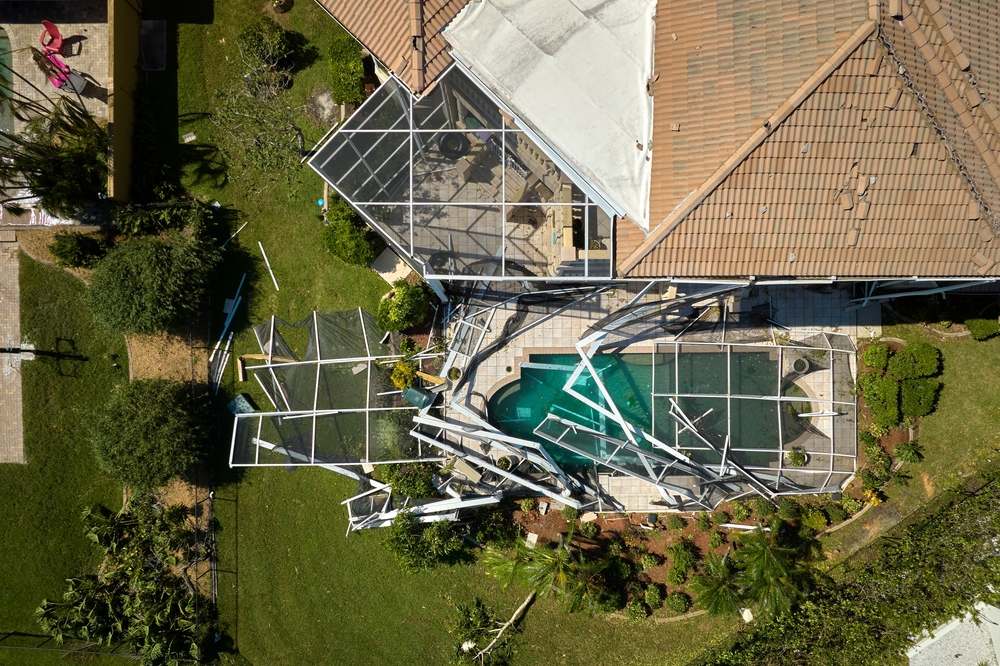2023 Hurricane Idalia – Clean Up Begins & What Now for Florida Homeowners

Hurricane Idalia recently made landfall in Big Bend as a Category 3 storm, killing at least three people in Florida before moving onto Georgia and other East Coast states before it weakened into a tropical storm. The storm left over 330,000 people without power.
In recent years, Florida communities have been hit by a string of powerful storms that have brought high winds, storm surge and tons of rain. Damaged roofs and homes have led to homeowners filing claims with their insurers. Unfortunately, the state of Florida’s insurance market has left many homeowners in flux.
As more insurance companies have left the Florida market and major storms have become more frequent due to climate change, the cost of homeowners insurance has gone up dramatically. According to the Insurance Information Institute, the average homeowners premium in Florida is roughly $6,000 a year compared to the national average which comes in around $1,700.
Florida has lost some major insurers in the last year as Farmers Insurance, Bankers Insurance and Lexington Insurance pulled out of the Sunshine State. Farmers Insurance departure will impact 100,000 current policy holders, and it will no longer write policies in the state.
While most of the news out of the insurance world in Florida is pretty negative, the one bright spot is that Florida has managed to put adequate levels of reinsurance in place.
“With all the weather and hurricane events that have come through, the reinsurance market has hardened on the Florida insurance companies,” said Chris Draghi, who specializes in the state’s insurance market as an associate director at AM Best, a global credit agency in a recent NBC News article. “That’s led to material increases and reinsurance costs, which, of course, then strain bottom line results to afford the same level of protections as in the past.”
All of this means that as the cost of materials and reinsurance increase, homeowners will pay more for coverage.
“If you look at year on year for the last three to five years, you’re probably talking about between 100 and 300% (in insurance cost increases) depending on where you are and obviously the age and the construction of the homes themselves” Buck said in the recent NBC News article. “But absolutely, we are looking at more increases.”
As premiums have increased, some homeowners in Florida have had to consider going without coverage due to the cost. According to the Insurance Information Institute, roughly 15% of homeowners in the Sunshine state are not carrying homeowners coverage which is the highest percentage in the country.
Florida has seen 16 severe storms or hurricanes since 2020 which have caused $100 billion to $200 billion in damage. All of the damage has led many homeowners to lose coverage and have to move their polices to the state-run insurer of last resort, Citizens Property Insurance Corp. Citizens is currently Florida’s fastest growing insurance company.
Citizens now has over 1.4 million policies, which is a massive increase from the 500,000 policies it had in 2019. This means that roughly 1 in 8 Florida households is now insured by the state’s insurer of last resort.
As Citizens takes on more policyholders, the danger becomes that Florida taxpayers may be on the hook if a massive storm hits Florida. “As they retreat and government is having an increasing role, that basically translates into taxpayers,” said Amy Bach, the executive director of United Policyholders, a nonprofit consumer advocacy group in the NBC News article. “So really, we’re talking about a huge shift in risk-bearing from the private sector to the public, and it’s a big deal.”
Next year, four new insurance companies will start selling policies in the state after legal reforms were passed and signed into law last year. Another insurance problem that Florida is currently experiencing is the 82% of the of homeowners who do not carry flood insurance. Flood insurance can be pricey in Florida and can be purchased via the National Flood Insurance Program or in the private market.
One common misconception in the insurance market is the fact that a standard homeowners policy doesn’t cover flood damage. If a homeowner is not carrying flood insurance, any damage caused by storm surge or flooding will have to be covered out of pocket.
According to data from the First Street Foundation, a nonprofit research group there are over 785,000 properties in the state that face flood hazards but are not recognized as high risks in FEMA’s flood maps. This could lead to many homeowners having to pay out of pocket for flood damage. “We’re going to see very significant flood losses from the hurricane this week, and only a small percentage of homeowners have that coverage,” said Mark Friedlander, a spokesman for the Insurance Information Institute.
